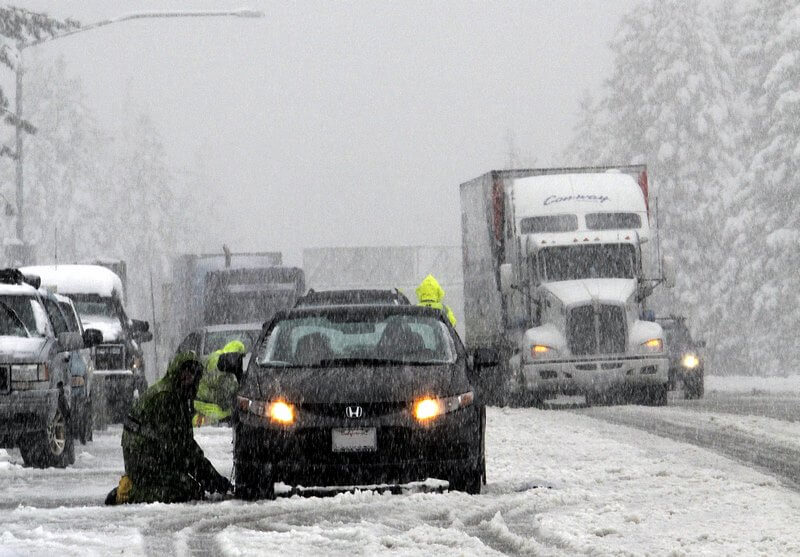
Everday life of a crisis specialist
After surviving a nor’easter with redundant planning, I wanted to share with you some lessons learned. You may remember my blog, Three Personal Preparedness Tips For Crisis Managers, where I stressed the importance of home preparedness. Well, this past weekend, I tested my plans. Storm Kenan brought the first significant storm up the Atlantic Seaboard of the 2022 winter season.
Not only did it halt transportation up and down the East Coast, but it caused scattered power outages from Virginia to Maine. The hardest hit was in my backyard, with Cape Cod and the Islands experiencing the most significant volume of outages, along with Southeastern Massachusetts. However, the Nor’easters storm track was uncertain until it battered the East Coast.

How to crisis manage from home
There’s an art to managing crisis teams from a remote workstation and finding the time to shovel out your in-laws. Interestingly, snow totals for this storm were highest in Stoughton, Sharon, and Quincy, Massachusetts. However, power outages pummelled the entire Cape peninsula. All of this isn’t to minimize anyone who felt the brunt of this storm. Parts of New York City got up to a foot of snow. In a city already reeling from ongoing COVID impacts and the recent deaths of two police officers, the storm must have felt like a sucker punch.
But I digress. One of the challenges teams experience working in virtual environments is poor communication. For anyone who coordinates crisis response, communication is critical. It’s also one of the hardest things to balance. Fortunately, being part of a geographically diverse team helps to embrace collaborative tools. Or course, maintaining power and network access is a bonus. A crisis manager leverages soft skills to a greater degree in remote situations than in office settings.

Virtual emergency managment vs in-person
You designate a centralized place where team members meet and collaborate with classic incident command systems (ICS). Team members wear vests to establish themselves in a role, and whiteboards share response status updates. A single chain of command is in place, and field responders communicate with walkie-talkies or cell phones. It establishes an ordered process in chaotic circumstances.
I spoke about evolving nimbleness of corporate crisis management in my webinar on Evolving Crisis Management Post-COVID-19 for Continuity Insights. ICS has many good things, but the rigid control system doesn’t work well in large organizations. Business leaders rarely practice it enough to become second nature. Instead, a hybrid or virtual approach links executives with line managers and their employees, well supported by crisis, business continuity, security, and IT/DR specialists.

The importance of redudant systems
So, it is logical for crisis managers to take an agile approach to bring this back to the storm. True story: my husband and I felt we were well prepared. Last year, we installed a redundant backup power system. Our generator was tested during a fall storm and held up beautifully. However, we learned a lesson in backup planning. Our generator obediently kicked in after our power went down on Saturday morning.
We were appreciative that our resources enabled us to install it. Our inventory was well stocked, and we hunkered down to enjoy the storm. Doing so was hard because the winds whipped snow sideways, and everyone’s windows and doors got coated with snow. Then, after a few hours, the generator stopped working. We were concerned, as it wasn’t something we anticipated. After a quick call to the installer, we did some troubleshooting. We soon discovered that the air filter froze from cold air and sideways snow. Luckily, after it thawed out, we got the power up and running again–twice.

What are good redundancies?
Redundant planning means multiple backup modalities and is vital for emergency preparedness planning. Experience demonstrates that companies and individuals cannot rely on just one or two alternatives. One substitute is good, but more is better. For example, consider multiple ways to manage a crisis remotely, from your desktop, mobile phone, or old-fashioned landline. Considering various power sources is highly recommended.
I was happy I kept a MiFi as a backup for connectivity, especially since I led a team status call on storm conditions over the weekend. Sometimes, we spend so much time thinking about the meta needs of the organization that we forget about personal preparedness. Although I knew the team would jump in if I couldn’t, it felt good to know I had no operational interruptions and could even give updates from the epicenter.

Salty Cape Codders
In closing, redundancy is more than a duplication of critical functions of a system or having data backup in place. It’s a holistic approach across an organization that considers operations and encourages personal disaster planning. It’s good surviving a nor’easter with redundant planning so that one element does not impair the overall function.
You want to limit downtime across the board. Taking this approach links organizational and operational resilience with integration with risk. It highlights that the more we test and train–even ourselves–the better prepared we are. Our learning and continuous improvement should be in full gear with each event. On a personal note, you can bet that we’ve ordered backup parts for our generator–just in case. Cape Codders were tested by the storm and proved they are still a salty bunch, ready to give back what mother nature throws at them.
